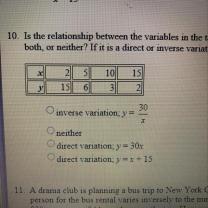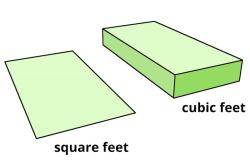How to solve initial value problems?
Solving initial value problems (IVPs) is a common task in calculus, particularly in the context of differential equations. IVPs involve finding a function that satisfies a given differential equation while also satisfying specific initial conditions. Here is a step-by-step guide on how to solve an initial value problem:
Step 1: Identify the Differential Equation and Initial Conditions
1.1. Differential Equation: Start by identifying the given differential equation. This equation will typically involve an unknown function and its derivatives.
1.2. Initial Conditions: Determine the initial conditions, which are specific values or conditions that the solution function must satisfy at a particular point or time. These conditions are often given as values of the function and its derivatives at a specific point.
Step 2: Solve the Differential Equation
2.1. Analytical Solution: Depending on the complexity of the differential equation, try to find an analytical solution. This involves manipulating the equation to isolate the unknown function and solve for it. Techniques may include separation of variables, integrating factors, or other methods depending on the type of differential equation.
2.2. Numerical Methods: If an analytical solution is not readily apparent or possible, consider using numerical methods such as Euler's method, the Runge-Kutta method, or other numerical techniques to approximate the solution.
Step 3: Apply the Initial Conditions
3.1. Substitute Initial Values: Once you have an expression for the solution function, substitute the initial values into this expression. This will allow you to determine any unknown constants or parameters that may be present in the solution.
3.2. Solve for Constants: Use the initial conditions to solve for any constants or parameters that appeared in the general solution. This will give you a specific solution that satisfies the initial conditions.
Step 4: Check the Solution
4.1. Verify the Solution: After finding the specific solution that satisfies the initial conditions, double-check to ensure that it also satisfies the original differential equation. Substitute the solution into the differential equation to confirm that it holds true.
Step 5: Express the Final Solution
5.1. Write the Final Solution: Express the final solution function explicitly, taking into account any constants or parameters determined in step 3.2.
Step 6: Interpret the Solution
6.1. Interpret the Result: Consider the physical or mathematical interpretation of the solution in the context of the problem. What does the solution represent? What do the values of the function at different points or times signify?
It's important to note that solving initial value problems can vary significantly in complexity depending on the specific differential equation and initial conditions. Some problems may be straightforward, while others may require advanced mathematical techniques or the use of computational tools. Practicing with a variety of differential equations and initial conditions is key to becoming proficient in solving IVPs.
Solving Initial Value Problems: Step-by-Step Guide
Step 1: Identify the differential equation and the initial condition.
The differential equation is a mathematical equation that describes the relationship between the rate of change of a function and the function itself. The initial condition is a value that the function takes on at a specific point.
Step 2: Find the general solution to the differential equation.
This can be done using a variety of methods, such as separation of variables, linear differential equations, or exact differential equations.
Step 3: Apply the initial condition to the general solution to find the particular solution.
This is done by substituting the initial value into the general solution and solving for the unknown constant.
Here is an example:
Problem: Solve the following initial value problem:
dy/dx = 2x
y(0) = 3
Solution:
Step 1: Identify the differential equation and the initial condition.
The differential equation is dy/dx = 2x and the initial condition is y(0) = 3.
Step 2: Find the general solution to the differential equation.
The general solution to the differential equation is y = x^2 + C, where C is an arbitrary constant.
Step 3: Apply the initial condition to the general solution to find the particular solution.
Substituting the initial condition y(0) = 3 into the general solution, we get:
3 = 0^2 + C
C = 3
Therefore, the particular solution to the initial value problem is y = x^2 + 3.
Mastering Initial Value Problems: Techniques and Solutions
There are a variety of techniques that can be used to solve initial value problems. Some of the most common techniques include:
- Separation of variables: This technique is used to solve differential equations that can be separated into two variables, one on each side of the equation.
- Linear differential equations: This technique is used to solve differential equations that are linear in the function and its derivatives.
- Exact differential equations: This technique is used to solve differential equations that are exact, meaning that they can be written as the derivative of a single-variable function.
In addition to these techniques, there are a number of other methods that can be used to solve initial value problems. The best method to use will depend on the specific differential equation that is being solved.
Tackling Initial Value Problems: A Comprehensive Approach
The best way to tackle initial value problems is to have a good understanding of the different techniques that can be used to solve them. It is also important to be able to identify the type of differential equation that is being solved, as this will determine the best method to use.
Once you have identified the type of differential equation and the technique that you will use to solve it, you can follow the steps outlined above to find the solution.
Here are some additional tips for tackling initial value problems:
- Practice solving a variety of problems. The more problems you solve, the better you will become at identifying the type of differential equation and the technique to use.
- Use a textbook or online resource to get help. There are a number of resources available that can help you learn how to solve initial value problems.
- Don't be afraid to ask for help. If you are stuck on a problem, ask a friend, classmate, or instructor for help.
With practice and dedication, you can master the art of solving initial value problems.













